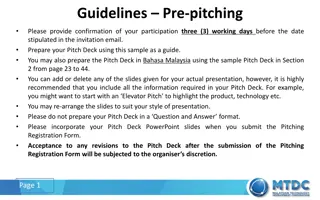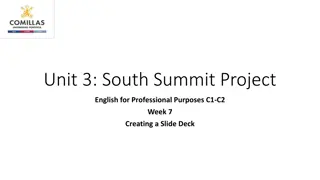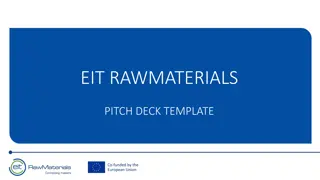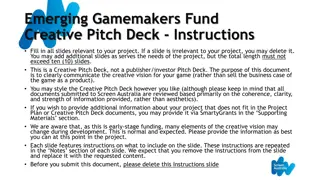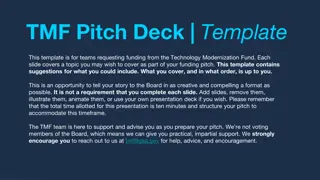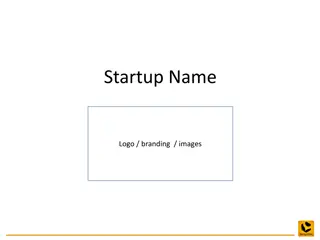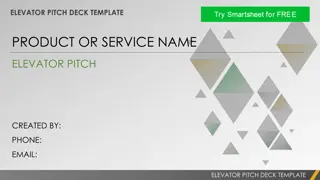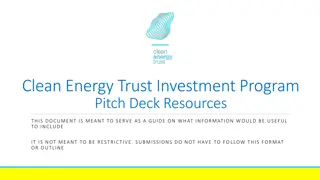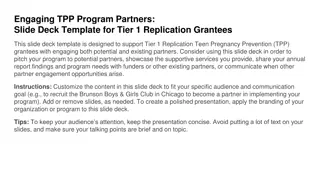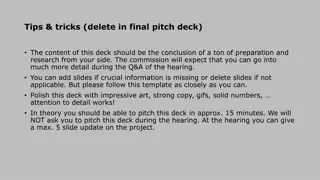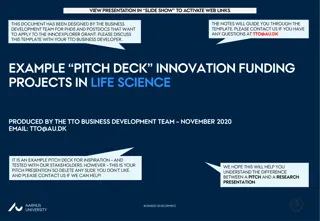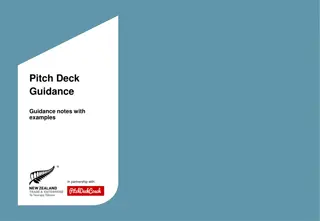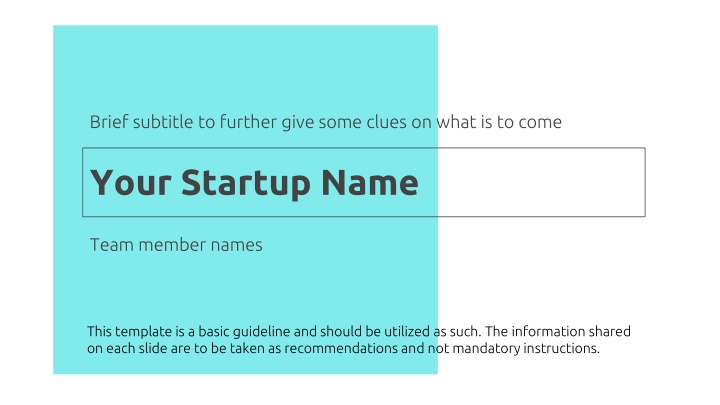
Innovative Startup Deck Guidelines - Problem, Solution, Viability
"Create a compelling startup pitch deck with these helpful guidelines covering problem identification, solution explanation, and monetization strategy for investor engagement. Understand the problem, showcase the solution, and highlight the business viability effectively."
Download Presentation

Please find below an Image/Link to download the presentation.
The content on the website is provided AS IS for your information and personal use only. It may not be sold, licensed, or shared on other websites without obtaining consent from the author. If you encounter any issues during the download, it is possible that the publisher has removed the file from their server.
You are allowed to download the files provided on this website for personal or commercial use, subject to the condition that they are used lawfully. All files are the property of their respective owners.
The content on the website is provided AS IS for your information and personal use only. It may not be sold, licensed, or shared on other websites without obtaining consent from the author.
E N D
Presentation Transcript
Brief subtitle to further give some clues on what is to come Your Startup Name Team member names This template is a basic guideline and should be utilized as such. The information shared on each slide are to be taken as recommendations and not mandatory instructions.
The World We Live in Add a world view or environment where your problem exists. E.g. if your Startup aims to create an electric vehicle, talk about the world of transporation running on fossil fuels and some contextual history. The purpose of this is to help the audience get into the mindset that makes it easier for them to understand the problem. 2
What is the problem? What problem are you trying to solve? Visuals or/and facts with a concise, specific problem statement. Use numbers of people affected, location, age groups etc 3
What are the repercussions of this problem? Why is the problem worth solving? What would happen if it is not solved? Show the impact of the problem by using numbers, examples to show how the problem affects environment/consumers/businesses/communities. E.g. if your startup is aiming to create a new eco friendly textile, it might be helpful to illustrate how much textile waste will be in landfills within 10, 20 + years. The impact can be be divided into short term and long term. 4
Your Solution Your startup idea and how it is a solution to the problem described earlier. Explain how the solution works. This is a vital part of the deck and you should focus on explaining it to the best of your ability without drowning the audience with too much information. Very often a diagram/graphic of the product or its interactions with the user helps explaining the solution. 5
How will you make money and great value? This is the viability slide. Explain how you will monetize this solution? This is crucial for any investor as they would need to align with your thought process and be able to see the monetary value of the idea. Your business model you be explained here. Explain the market it will operate in both with demographic and geographic analysis. Focus on explaining the revenue and profit (if known) potential thorugh numbers. 6
How far have you come? How far along are you on your journey? Progress does not always have to be revenue. Research conducted, insights gathered, prototype deployed, number of people your solution has reached are also examples of key metrics to define progress. This is also a great opportunity to note any letters of intent, users and their feedback to date or testimonials from interested third-parties who want to see your solution in the market! 7
The competition How are you different from others who are trying to solve the same problem with a similar or different solution? Dividing the competition in direct and indirect categories can be a good way to illustrate the competition landscape A comparative analysis which gives out a good idea about how much of your solution is already out there should be enough. Search hard for competitors. The answer we have no competitors is seldom beleived by venture investors and/or judges. If there aren t any other product that solves the problem, explain how the users are dealing with the problem right now. What are the way-arounds, etc 8
Why is it the right solution? What are the Unique Selling Propositions of your solution? Why would the users choose your solution over others? Why didn t anyone else try to build a similar solution before? What were the major roadblocks? 9
Social Purpose Social Purpose is a key theme of Together 2021 and the judges scoring matrix includes bonus points for startups that have thought this through. How is your business going to help people and give back to your community? Perhaps social purpose is at the heart of your solution? But perhaps you can also create profit that can be used to support underprivileged members of society? Or perhaps you can align yourself with a key charity or non-profit? Or you can create jobs and opportunities for underrepresented communities? Beyond personal monetary gains, what are the things you want to achieve through this business to help people? 10
Sustainability What impact would your startup have on the environment/planet? How will your business ensure you don t create a negative impact on the planet and environment? How will your business stand out in this regard, compared to other solutions/companies? Some businesses might have a net positive impact on the environment? Others might just be able to show that they have been thoughtful enough to ensure they don t have a negative impact in scaling their company. 11
The Action Plan What are the next steps and objectives to make it a successful business? A timeline with important milestones should be helpful to present the full picture of your plans. Dividing the goals between short term and long term ones may be a good idea. 12
Your Team Who is part of your team? And what role is being played by whom? Why are you as a team, the best people to work on this? What skillset/experience/connections do you bring on the table which is rare/unique? 13
Key Asks If you win, how will you leverage the prize money and other Together 2021 benefits/connections? What do you need to take your startup to the next level? This slide shows that you understand how your solution will turn into a real business and you have the ability to create the business without being unrealistic about the resources required. 14
Thank you A final slide to wrap up and conclude. Leaving the floor open to questions. You should aim to create a deck which makes people think beyond your deck and ask questions to further understand the solution presented and not clarifications about what you have already presented. 15

